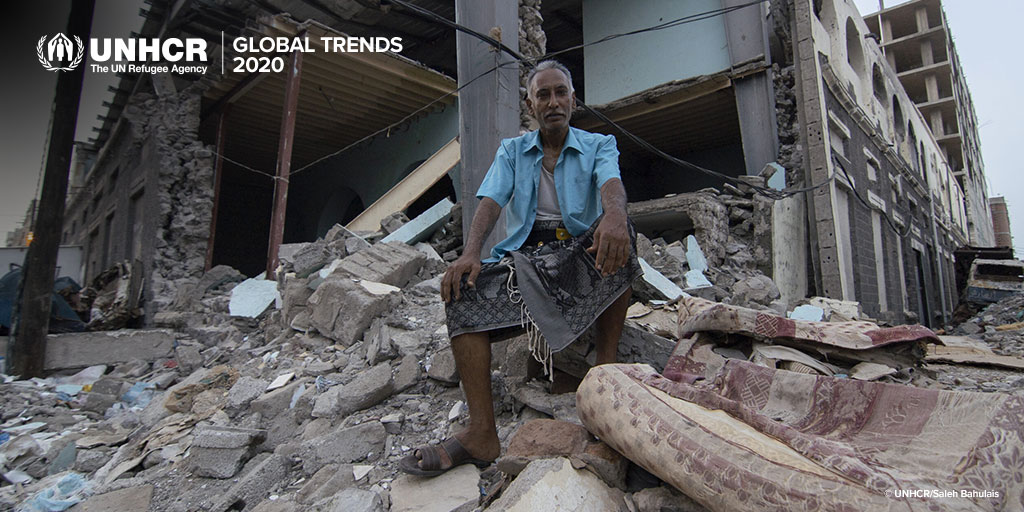
South Sudan. Sudanese refugees observe COVID-19-related physical distancing measures during a food distribution.
© UNHCR/Elizabeth Marie Stuart
Forced
displacement in 2020
Trends, crises and responses
Statistics at a glance
82.4 million
FORCIBLY DISPLACED PEOPLE WORLDWIDE
91.9 million
PEOPLE OF CONCERN TO UNHCR
A record number of people were forcibly displaced by the end of 2020, as ongoing conflicts drove people from their homes and new conflicts arose. Many also fled from climate-related emergencies such as floods and droughts, with no guarantee of a quick return. As displacement grew, so did the number of people of concern to UNHCR, with almost 92 million refugees, asylum-seekers, internally displaced, stateless, recent returnees and host communities.
In the face of a pandemic that touched the lives of every person, UNHCR and its partners responded with determination, agility and innovation, while host communities and forcibly displaced people themselves showed resilience and generosity. Many States responded in solidarity, keeping paths to asylum open and bringing displaced people under the protection of their national pandemic programmes.
The COVID-19 crisis
110 countries
had made asylum possible by the end of 2020 despite COVID-related border restrictions.
Displacement trends: As the COVID-19 crisis unfolded, governments acted rapidly to contain the spread of the virus: within a few short months, 100 countries had closed their borders, putting displaced populations under increasing stress and at growing risk. And yet, in a sign of solidarity and respect for human rights, some border restrictions were eased for people fleeing conflict and persecution.
9.89 million
refugees and other people of concern received essential health care services in 68 countries.
Our annual reports
GLOBAL TRENDS
Global Trends explains how and why worldwide numbers of refugees, asylum-seekers, internally displaced and stateless people changed over the year, including people who have returned to their countries or areas of origin. As UNHCR’s main annual statistical report, Global Trends aims to provide insights into forced displacement, and is a core analytical source for UNHCR and its partners.
What were the main trends in displacement in 2020?
GLOBAL REPORT
The Global Report, UNHCR’s main annual publication for donors and partners, tells the story of how the organization fulfilled its mandate to protect and assist refugees and other people of concern, from the moment when people are forced to flee until they can return or resettle or otherwise resolve their situation, including by gaining nationality and ending statelessness. The Global Report details UNHCR’s funding and the challenges and achievements recorded by its operations and divisions in seven regions around the world.
How did UNHCR respond?
Who’s included?
Global trends
Forcibly displaced people
In Global Trends, the total number of forcibly displaced people (82.4 million) encompasses refugees, asylum-seekers, internally displaced people and Venezuelans displaced abroad. It includes refugees and other displaced people not covered by UNHCR’s mandate and excludes other categories such as returnees and non-displaced stateless people.
Global report
People of Concern to UNHCR
The Global Report looks at how UNHCR sought to protect and assist “people of concern”—those whom UNHCR is mandated to protect and assist: the forcibly displaced, including those trying to return home; people who are stateless or at risk of becoming stateless; and other groups to whom UNHCR has extended its protection or provided assistance on a humanitarian basis, including vulnerable host communities.


